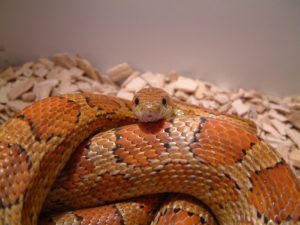
It’s easier to believe what we’re afraid of…
It’s easier to believe what we’re afraid of, than what we hope for. (Almost always, for almost everyone.)
I can’t tell you how much it changed my practice when I realized this phenomenon, and began explaining it to clients. Here are two ways to think about it.
- Let me tell you a story about evolution. (Just a story, mind you. This isn’t the time to get bogged down in phyla and epigenetics and all that.) Long ago, there were two kinds of people. One group of people saw a coiled vine and assumed it was a coiled vine. They were promptly bitten by a sneaky snake and all died. Thus, they have no living descendants. The other group of people saw a coiled vine and jumped away, thinking it was a snake. They did a lot of unnecessary jumping, a little necessary jumping, and a lot of staying alive and going on to make babies. They are our great-great-grand-cestors. So, we’re all evolved to be a little jumpy (get it? “jumpy”? haha!).
- If you don’t like to think about it think way, you can also think about it from a very pre-frontal cortex, literature informed stance. Humans tend to be risk averse – a loss of $5 is more distressing to us than a gain of $5 is joy-inducing. In any given situation, we’re likely to put more emphasis on what we could lose than what we might gain. Fear and aversion conditioning (under most circumstances) also happen faster than other kinds of associative learning. So, if you mistake a snake for a coiled vine once and have a near miss – you’re quick to avoid vines in the future. (But you don’t so quickly change your approach to potential snakes when just one turns out to be a vine – thank goodness!) So, it’s easier to believe what we’re afraid of than what we hope for.
Let me just give you a few examples of application:
I know you’re already thinking of your classic GAD catastrophizer. Good, that’s #1. Also, this leads to exacerbated social anxiety, as clients overestimate the likelihood of negative judgment. It contributes to the ever-building cause-effect sequences in OCD, because clients misjudge the likelihood that events are related. Phobia maintenance, misinterpretation of panic symptoms, etc.
And it’s not limited to anxious clients. This is the dad who can’t listen to his teenager’s needs because of his fear for her safety. It’s the workaholic (whose husband is in therapy because she can’t squeeze it in) who doesn’t realize she has a dual income family. It’s part of what maintains the hopelessness of your depressed client, the migraines of your “under-adequate”-mom client, and even the frantic relational grabbiness of your client with BPD.
Also true in your couples – when one partner is afraid of being cheated on again – he wants to hope it won’t happen again, but it’s much easier to be afraid that it will. When sex is painful, she wants to hope that it won’t be next time, but she’s afraid it will be. That’s easier to believe, and that leads to tension, and that leads to more pain. When he has an erectile “failure,” it’s harder to hope it won’t happen than to be afraid it will, and that leads to performance anxiety, and that leads to more “failure.”
It’s the beginning of so many self-fulfilling (self-defeating!) prophecies. And while we can’t change the fundamental neurology (and maybe don’t want to), bringing our own and clients’ awareness to this little quirk of our brains can help us all to pause, and bring a little more prefrontal cortex to our otherwise limbic reasoning. Here are a few specific things that can help:
- Accept their fears with gentleness, and help them to extend self compassion
- Work on reducing the actual and/or perceived consequences of the feared event
- Co-create strategies to gain information that will help client evaluate potentially fearful situations
- Teach this phenomenon to help clients reduce their emotional reasoning
Comment below with examples of how you’ve seen this in action with your clients!